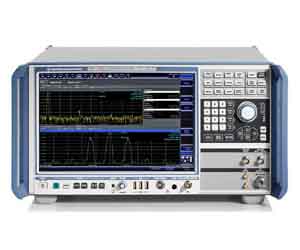Not that a BERT is a basic instrument by any means. But I thought (while still in a techie mode – or would that be mood?) that I would bring you a pretty basic article on quite a complex test and measurement instrument. So grab a cup of coffee, curl up in front of your screen, and enjoy!
The Bit Error Rate Tester (BERT) is the test and measurement (T&M) device of choice when checking transmission and reception quality over telecommunications lines. These lines can be copper-to-copper, twisted pairs – such as Ethernet – coaxial cable, cellular phone (as 4GLTE) or fiber optics. Typically, all of these methods are used and they are often run through radio frequency repeaters, microwave, or satellite links. The BERT is also used to troubleshoot for problem areas, check repairs to circuits, and used to test alternate or secondary (fallback) transmission paths.
The BERT’s function is to stress test transmission lines to isolate sources of noise, jitter, intermittent connections and impedance mismatching. There are several types of stress testing. These can include maximum voltage throughput, as when sending all ones (1s), minimum voltages tests as all zeros (0s), forward error correction (ECC) and error detection and correction overhead. Alternating or pseudorandom bit streams are used to simulate typical traffic over the lines. There are far too many mathematical models and engineered algorithms to list in detail, but they are critical in the selection of the equipment.
BERTs can use a variety of multiplex and modulation modes, the more common commercial systems using some form of Phase Shift Keying (PSK) and other forms of signal concatenation. The major components of a BERT include a modulator/demodulator (“modem”) to connect the BERT to the transmission lines, a pattern generator, a clock to synchronize BERTs and establish baseline timing, an error detector, often some sort of digital analyzer to visually observe or record the devices under test, and a computer interface.
The complexity of digital transmission necessitates the use of equally complex – and generally expensive – specialized test equipment. The cost can easily be doubled when end-to-end testing from both termination points is required. As a practical rule, most tests can be run using farside or nearside loopbacks, which allow a single BERT to generate the patterns and detect errors sent back to itself via the loopback.
HP/Agilent and Tektronix BERTs dominate the field in this particular technology; however, Anritsu has a long history of manufacturing leading edge telecommunications test and measurement equipment. More than 95% of the BERTS costing $10K and up are made by these manufacturers. Features, flexibility, and suitability to a purpose have resulted in some very expensive — $100K BERT test systems. Systems designed to a single purpose, such as DS line testing, can be much more affordable. For the field technician, companies such as Fluke and GAO handheld BERTs provide techs with rugged, durable, and portable solutions. Options such as pass-through of the original traffic can be a valuable asset when making live tests or in mission-critical applications, where the transmission line cannot be taken completely out of service.
Necessity for super-high frequency (SHF) and extremely high output (EHF) and input frequencies, USB 3.0, the most recent Windows O/S, and similar hardware and software user interfaces are all desirable features that can add significant cost to a unit. What used to be considered frills and gimmicks are now required features.
HP/Agilent and Tektronix have different approaches to the same issues, yet in the end, the results are the same. Without putting too fine a point on it, Tektronix instruments are more conducive to the laboratory/engineering set, while HP/Agilent is more focused on the field/maintenance group. This is a purely subjective opinion, generally based on an individual’s tastes rather than specific features. What is far more valuable is the capabilities of whichever BERT is preferred. Does it operate at the frequencies required? Can it generate the patterns necessary for test and evaluation? Is the instrument modular or easily upgradable without factory intervention? Which BERT has the best ROI potential?
Handheld portable units are much easier to compare, since they are more likely to be designed for a specific communications protocol, as T1/DS1, E1, or OC1. Desirable features in all handhelds, regardless of protocol or interface, are durability under extreme field conditions, the ability to bridge or pass-through communication modes that are transparent to the traffic, and enough flexibility to meet any reasonable situation likely to be encountered. Often the answer is defined by the question: Would you rather drop an $8000 HP or an $800 Fluke, given that both are testing an identical circuit?
As the telecommunications network is continuously evolving, it is necessary to keep your T&M as close to the leading edge as possible. Competition is too intense and customer demands are too critical to try to short-cut on quality control and rapid response to a call for repair. Top of the line, stable, and trustworthy T&M can save many times its cost by ensuring high uptime and low mean time to repair networks and transmission lines.
Ready to compare some Berts – both new and discontinued? Check them out in Used-LIne T&M Specifications.


